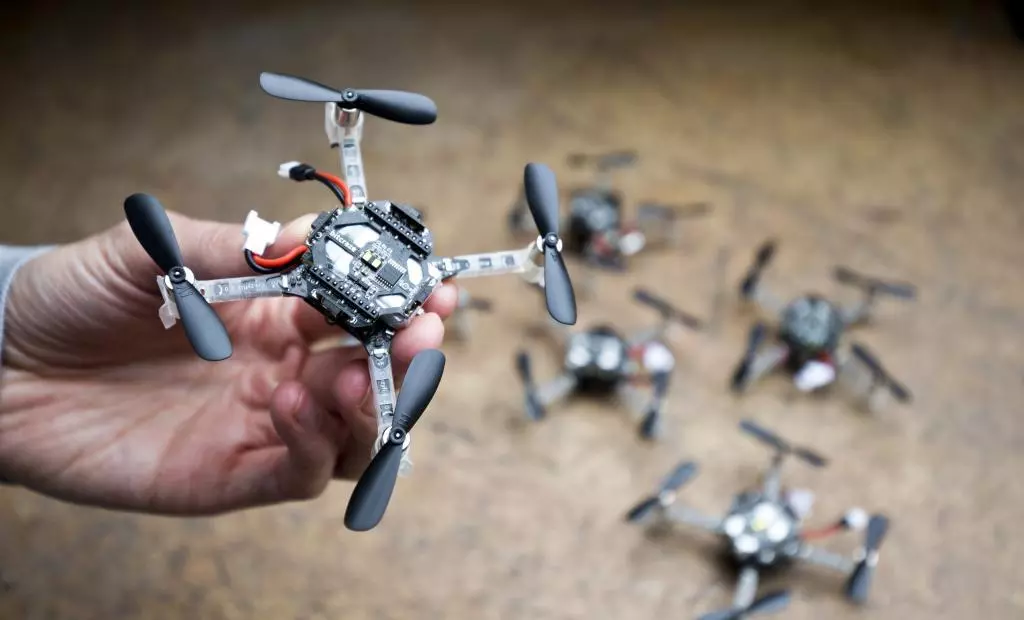Hazardous places such as burning buildings can be dangerous to explore, which is why scientists are increasingly looking at using swarms of tiny drones to do the job. A new bioinspired navigation system could help make such life-saving swarms a reality.
Because larger drones have the physical space and the thrust required to carry relatively powerful microprocessors – along with the big batteries that power them – they're able to perform tasks such as following floor-plan maps. That said, a cooperating swarm of small quadcopters can cover a given amount of space much faster than one large drone.
The problem is, those little guys don't have the size or the power to perform complex onboard calculations. With that in mind, researchers from the Netherlands' Delft University of Technology and Radboud University of Nijmegen – along with colleagues at Britain's University of Liverpool – have developed a type of "bug algorithm."
The system was inspired by the manner in which swarms of flying insects explore their environment, simply avoiding obstacles and following the lay of the land as they go, then returning to a home base. No map is involved.

When the algorithm was utilized to control a swarm of six small Crazyflie 2.0 quadcopters, the aircraft were collectively able to explore about 80 percent of open rooms within one floor of a building, within six minutes – according to the scientists, a single larger drone would be unable to do so within the same amount of time.
After initially setting out from a home base, each drone defaulted to trying to go in a different direction. Utilizing onboard sensors, they were able to both avoid obstacles and perform a "wall following" routine, in which they followed the contours of – well, the walls – along with items such as furniture within each room. Additionally, they were able to gauge one another's relative locations (and thus avoid mid-air collisions) by monitoring the strength of wireless signals transmitted by chips aboard each drone.
When their batteries got down to a 60-percent charge, all of the drones proceeded to follow a radio beacon signal back to their home base. The scientists were then able to review video that was shot by the copters' cameras and recorded on onboard SD cards, determining the location of a red mannequin that represented a person requiring rescue.
"Bug algorithms do not make maps of the environment but deal with obstacles on the fly," says Delft PhD student Kimberly McGuire. "In principle, detailed maps are very convenient, because they allow a robot to navigate from any point in the map to any other point, along an optimal path. However, the costs of making such a map on tiny robots is prohibitive. The proposed bug algorithm leads to less efficient paths but has the merit that it can even be implemented on tiny robots."
A paper on the research was published this week, in the journal Science Robotics. You can see the little drones in action, in the video below.
Source: TU Delft




